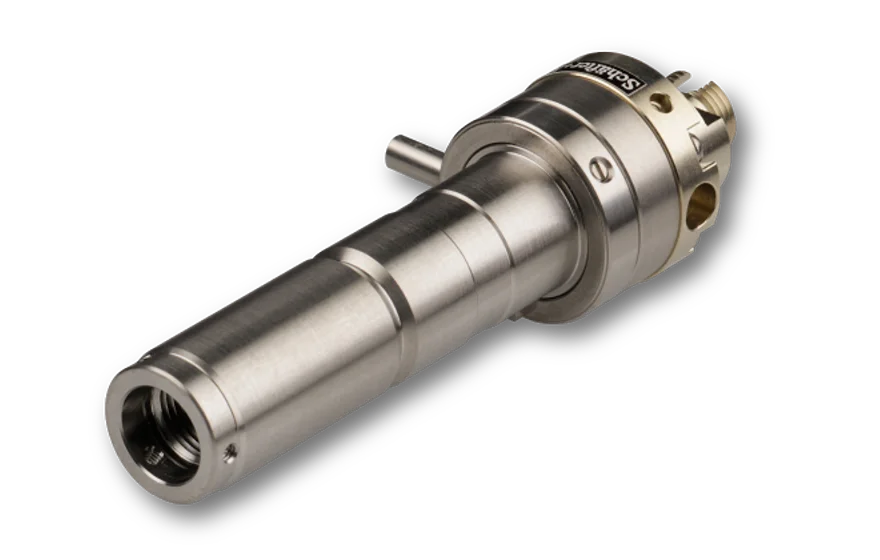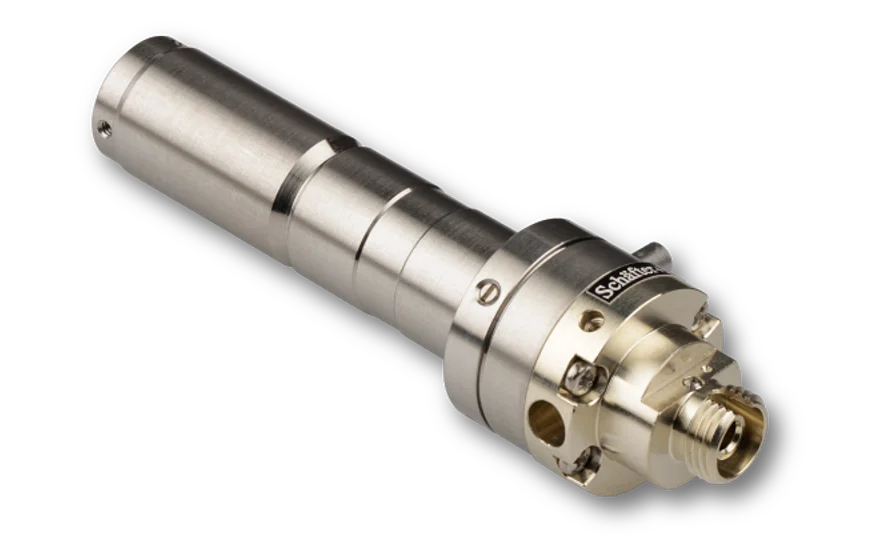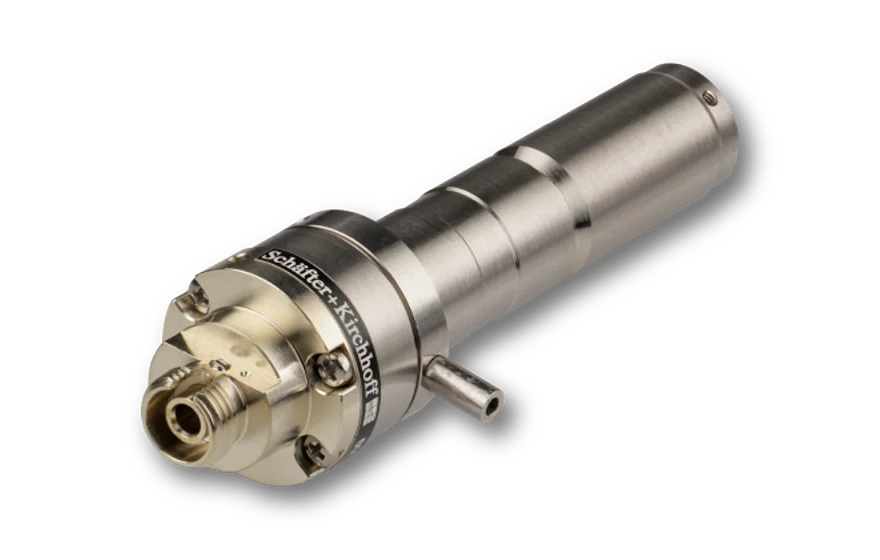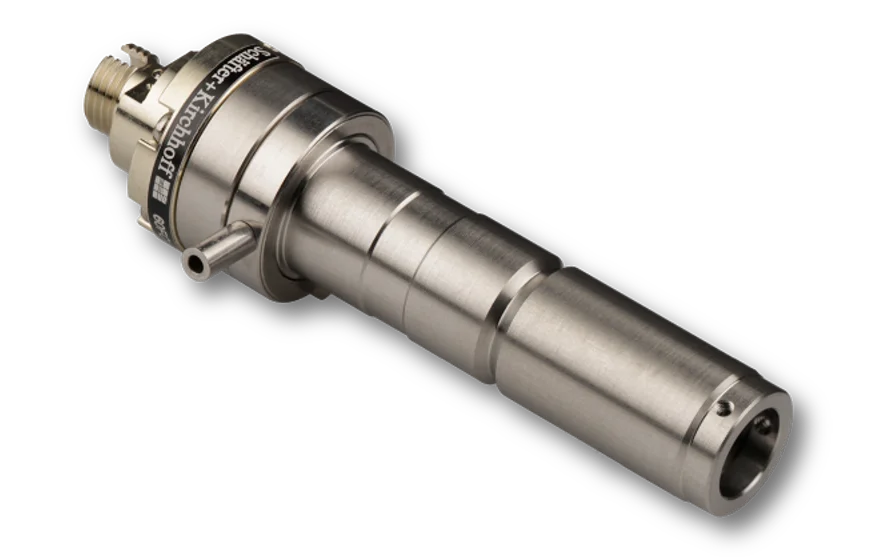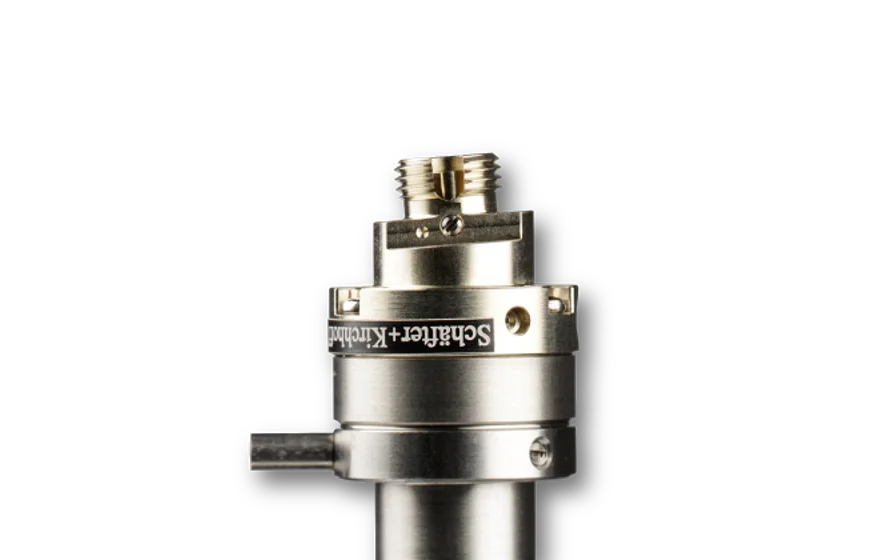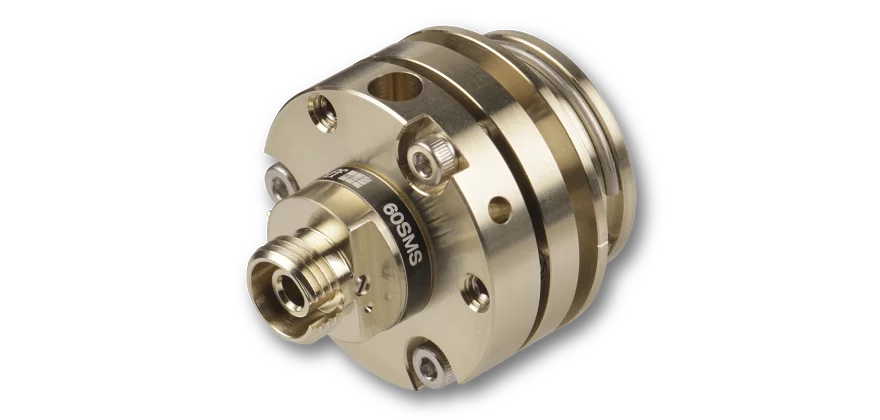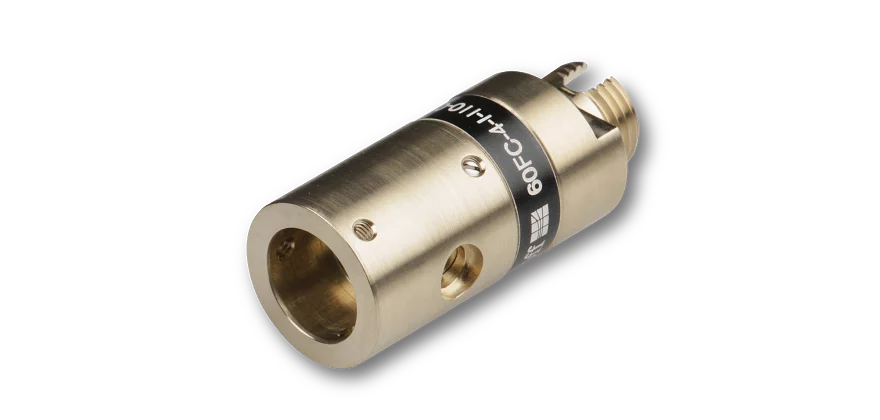The fiber collimators series 60FC-K are compatible with the kinematix® optomechanics and can be used for coupling into single-mode or polarization-maintaining fiber cables or as a fiber collimator. They are suitable for single-mode and polarization-maintaining fiber cables leading to collimated beams with a Gaussian intensity profile. Please note that for multimode collimation the intensity profile is not Gaussian and depends on specific fiber and radiation properties.
An optics for each application
A large variety of collimating optics allows that the optimum focal length and the best lens type for a single wavelength (monochromat) or a wavelength range (achromat or apochromat) can be selected for each application. All lenses are AR-coated.
Adjustment of focus
The distance between fiber end-face and collimating optics is adjusted by means of an eccentric key. The lens does not rotate when adjusting the focus. The final focus setting is locked by means of two radially arranged clamping screws.
Optimum lens performance
The angled polish of connectors of type APC is considered by a pre-angled mechanical coupling axis that compensates the beam deflection and you can use the lens centrically. This minimizes aberrations simply resulting from a non-ideal beam path through the lens.
Connector Type
The fiber collimator can be equipped with FC PC (wide key*), FC APC (wide key*), or LSA (compatible with fiber connectors type DIN, AVIO and AVIM) receptacles. SMA-905 (F-SMA) type receptacles are available for 0° and 5° or 8°-polish e.g. for SMA-905 High Power connectors. In case of FC or LSA with a spring loaded ferrule the fiber coupler has an additional grub screw to increase pointing stability. *Even though the fiber coupler has a wide key receptacle it still can be used with both narrow key and wide key fibers. More information can be found here.
Material
The fiber collimators are made of nickel silver and stainless steel.
Mounting
The fiber coupler needs to be placed into kinematix® optomechanics (not included) in order to be used as in- or outcouplers.
